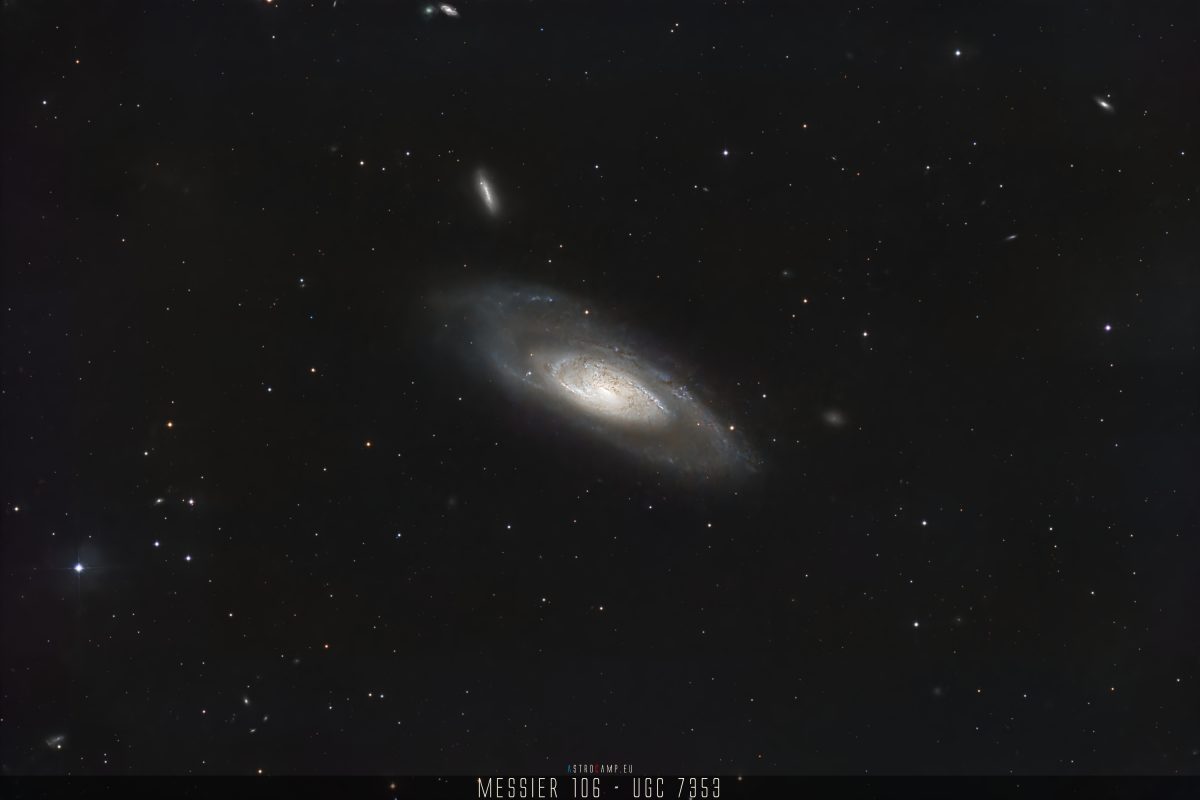Galaxy Messier 106, the first single galaxy picture this galaxy-season. More data is waiting for integration.


Galaxy Messier 106, the first single galaxy picture this galaxy-season. More data is waiting for integration.

Messier 106 is a large intermediate spiral galaxy located in the constellation Canes Venatici, approximately 23.7 million light-years away from Earth. It reaches its annual culmination at astronomical midnight and is best observed in mid-March for observers in the Northern Hemisphere.

After a long time, my Vixen VC200L and Canon EOS R(a) finally had the chance to be used under a starry sky again. A fantastic duo—perfect for galaxy season.

Messier 33, also known as the Triangulum Galaxy, is the third-largest galaxy in the Local Group, following the Andromeda Galaxy and the Milky Way.

Messier 110 is a dwarf elliptical galaxy located in the constellation Andromeda, approximately 2.69 million light-years from Earth, and reaches its annual culmination at astronomical midnight in early October.

Messier 32 is a dwarf elliptical galaxy located in the constellation Andromeda, approximately 2.49 million light-years from Earth, and reaches its annual culmination at astronomical midnight in early October.

The Needle Galaxy is a spiral galaxy located in the constellation Coma Berenices, reaching its annual culmination at astronomical midnight around end March.

Messier 60 is a giant elliptical galaxy located in the constellation Virgo, reaching its annual culmination at astronomical midnight around April 1st.

After a long time without any chance to make use of the galaxy season I was able to capture my 1st set of photons coming right out of the Needle Galaxy.

Messier 59 (M59) is an elliptical galaxy located in the constellation Virgo, and it reaches its annual culmination at astronomical midnight around April 1st.